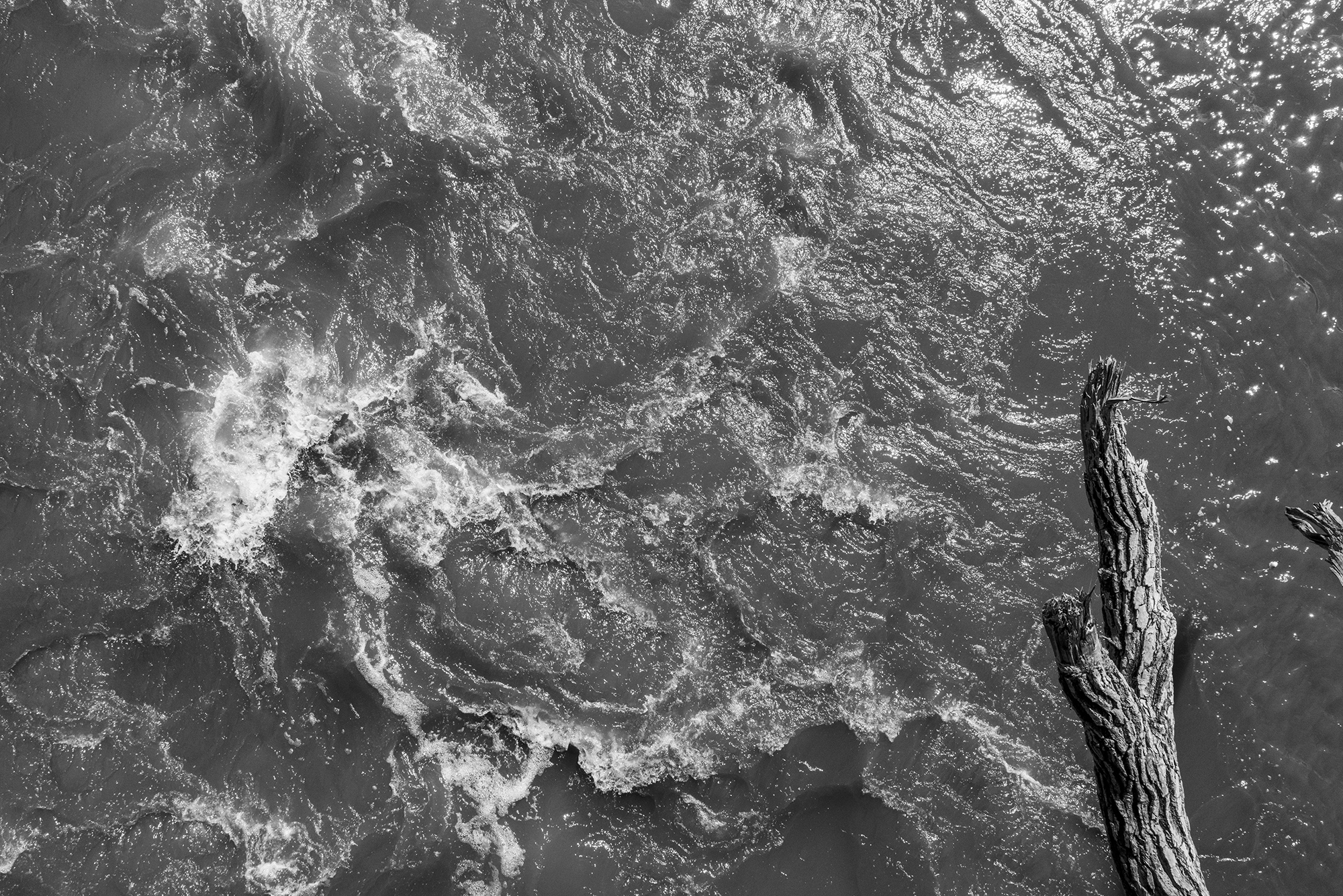WATER IN PHOTOGRAPHS
by douglas m. koch
2012
“In the world there is nothing more submissive and weak than water. Yet for attacking that which is unyielding and strong nothing can take precedence over it. This is because there is nothing that can take its place.”
Tao Te Ching,
translation by D.C. Lau

Snags, turbulent underwater jam-up, Cottonwood River, 2016
Water is currency, a standard for equilibrium and the original idea behind solutions. As a bellwether for socioeconomic justice and peace, it carries warnings about the consequences of political divisiveness and suggests ways for joining. Its beauty, value to life and potential for destruction are beyond measure but not appreciation. Water is a metaphor for things that change but remain the same.
As a child, I lived within walking distance of Monocacy Creek on the outskirts of Bethlehem, Pennsylvania. A familiar path took me past a few properties and over a wooded drumlin. Mostly, my purpose was solitude and peace, and I gradually came to associate those feelings with the sound of water. Just a few years later, I photographed its rushing water with a fast shutter speed, arresting its swollen surface and the odd reflections of trees it distorted. In my darkroom, a tiny closet, light shined on an invisible world beyond my imagining.
Running water tends to glance over parched ground before penetrating it. Deeper seeing may then recognize what it first dismissed by looking again. A camera can be a useful tool for paying attention and changing one’s mind, often by the simple act of inclusion. A photograph of water might suggest depth or shallowness, equipoise or emptiness and other preferences of the viewer. Like calm water, unexposed film is pliant and impressionable. Both surfaces reflect complex singularities, but their deeper natures are murky and ambiguous: subjects of desire, memory and myth.
Abstraction is a natural process of the mind, just as one may notice common elements in disparate circumstances. From the scattered and the peculiar, a conjoined world seems to emerge. A photograph of a puddle or firefly may suggest structures as far flung as oceans and stars. In this sense, photographs may represent ideas as well as a narrow set of presumptive facts.
The mere sight of water holds a primal attraction, though riddled with scarce facts. Mirages, an unusual deformation of light through layers of hot air, waver as if made of uncertain water. The connection between hope and water is as old as thirst and the occasional scramble for high ground. Nothing is more essential and tenuous as the waters of life.
The cells in our bodies are leaking vessels, postponing dissolution. Underneath the eye’s cornea, the aqueous humor bulges under slight pressure while bending light toward the pupil. From the optic nerve, the brain deduces the outside world in efficient but not foolproof ways. A persistent gaze prompts a small but meaningful shift in pattern and sudden change of mind. A close look at a tidy garden reveals an invasion of unwanted guests.
To abide in the obvious while knowing that much remains hidden is a photographer’s wonderful dilemma and curious treasure. From outlooks on bridges, I sometimes note the circumstances of passage. At the water’s edge, I linger quietly and expectantly. The seepage underfoot is life itself.
